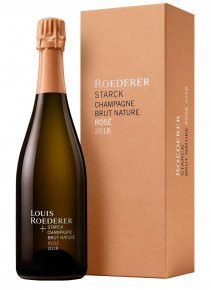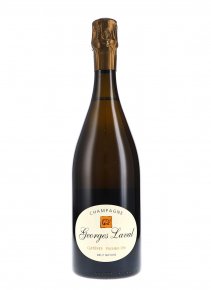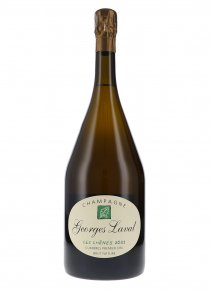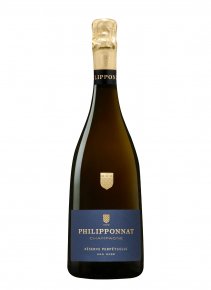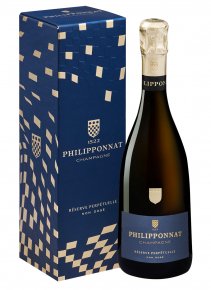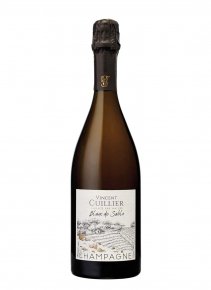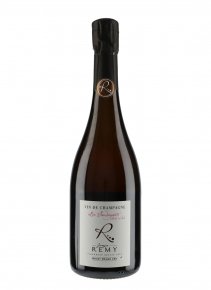All our Champagnes Brut Nature
Brut nature champagne, also known as zero dosage, is a champagne without added sugar, which gives it great purity and a lively acidity. Its taste characteristics are distinguished by notes of dried fruit, flowers, and minerality, making it an ideal choice to accompany seafood or to be enjoyed as an aperitif.
Brut nature champagne: the essence of the Champagne terroir
When we talk about champagne, we immediately think of brut champagne, the most popular and best-selling type of champagne in the world. However, a type of champagne is gaining in popularity: brut nature champagne, also known as zero dosage champagne. To better understand what a zero dosage champagne is and how to choose the best one, it is essential to delve into the production process of this exceptional wine.
The process of making brut nature champagne
Champagne, located among the northernmost vineyards in Europe, benefits from a unique climate that gives its wines a distinct identity. However, this geographical location also presents challenges, including less exposure to the sun and heat, which can make the wines more acidic. Traditionally, to balance this acidity, winemakers added a liqueur d’expédition, a mixture of cane sugar dissolved in white wine.
This liqueur is added at the end of the production process and determines the type of champagne produced: brut, sweet, extra-brut, or zero dosage. However, brut nature champagne does not contain any added sugar in the liqueur d’expédition, which makes it a wine of remarkable purity. It contains between 0 and 3 grams of sugar per liter, coming only from the residual, and therefore natural, sugars of the grape.
Brut nature, zero dosage, nature: what's the difference?
In reality, there is no difference between these terms. They all refer to a champagne made without added sugar in the liqueur d’expédition. The Comité Interprofessionnel du Vin de Champagne (CIVC) recognizes three official designations: "champagne brut nature", "champagne pas dosé" and "champagne dosage zéro".
The particularities of non-dosed champagnes
Brut nature champagnes are appreciated for their pure expression of the terroir. The absence of added sugar allows the authentic characteristics of the grape and the soil to be revealed.
How to choose the best brut nature champagne?
It is difficult to designate a "best" brut nature champagne, as it all depends on personal tastes and the style of the winemaker. Many Champagne winemakers have rediscovered the potential of non-dosed champagnes.
When to enjoy a brut nature champagne?
Zero dosage champagnes, with their low sugar content, are perfect for lovers of dry and lively wines. They are ideal for aperitifs or to accompany iodized dishes such as seafood and fish. Their freshness and minerality enhance the delicate flavors of these dishes.
The price of brut nature champagne
The price of brut nature champagnes varies depending on several factors, including the producer, the vintage, and the quality of the grapes used. In general, zero dosage champagnes are in a slightly higher price range than traditional brut champagnes due to the care taken in their production and the quality required to produce a balanced wine without added sugar. Bottles can start around 30 euros and reach much higher prices for prestigious cuvées or rare vintages. For example, reputable houses like Laurent-Perrier or Roederer offer zero dosage cuvées that can approach, and sometimes even exceed, 100 euros.
Some anecdotes to spice up your tasting
- Did you know that the term "brut nature" can be misleading? Although this champagne does not contain any added sugar, it can still contain a very small amount of natural residual sugar from the grape, often less than 3g/l. This detail can make all the difference in the perception of the taste.
- Brut nature champagne is often chosen by sommeliers for complex food and wine pairings, as its purity does not mask the flavors of the dishes served.
- A little tip for recognizing a good brut nature champagne? Look for the mentions of "réserve" and "millésimé" on the label, indicating the use of high-quality wines and exceptional vintages in the blend.
All our Champagnes Brut Nature : good to know
| 🔢 Available products count | 117 |
|---|---|
| 🎨 Colour | White champagne, Rosé champagne |
| 🍾 Format | Bottle, Magnum |
| ↕️ Dosage | Champagne brut nature |
| 🍇 Cépage | Pinot noir, Pinot meunier, Chardonnay, Pinot blanc, Petit meslier, Arbane |
| 📍 Terroirs | Cote des bar, Vallée de la marne, Cote des blancs, Montagne de reims, Avize, Cramant, Grande vallée de la marne, Massif de saint thierry |
| ⭐ Vintage | Non vintage champagne, Vintage 2009, Vintage 2016, Vintage 2006, Vintage 2012, Vintage 2018, Vintage 2017, Vintage 2015, Vintage 2019, Annata 2013, Vintage 2008, Vintage 2020, Vintage 2021, Vintage 2003, Vintage 2004, Vintage 2014 |
| 💡 Type de champagne | Blanc de blanc de pinot noir, Blanc de blancs, Rosé de saignée, Blanc de noirs, Blanc de meuniers |


